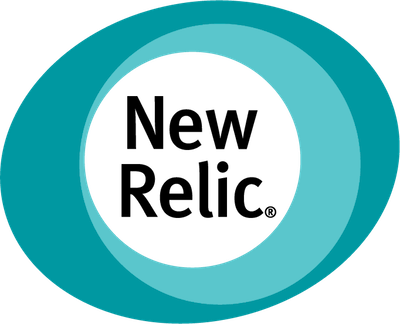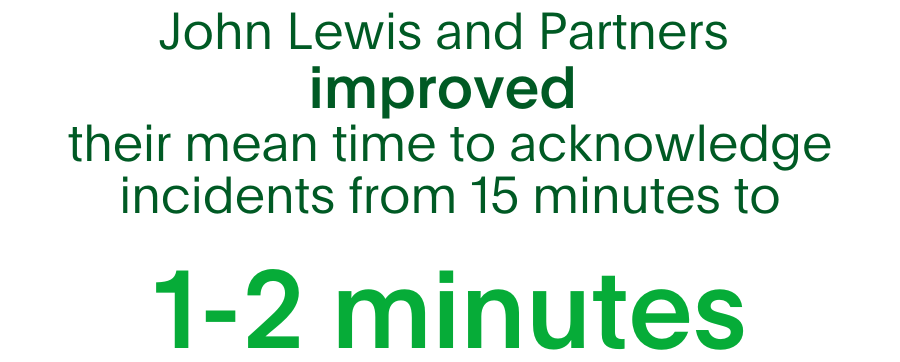
John Lewis & Partners Taps PagerDuty to Power Always-On Retail Experiences

Size: 10,000+ Employees
Industry: Retail
Location: London, UK
Customer Since: 2019
Key Integrations:
 New Relic
New Relic
 Prometheus
Prometheus
Founded in 1864, the John Lewis Partnership is the largest employee-owned business in the UK, with two main retail brands: John Lewis & Partners, a chain of high-end department stores, and Waitrose & Partners, a grocery retailer.
For John Lewis & Partners, its online presence began in 2001 and has since grown considerably. The company moved from a monolithic ecommerce platform hosted in its data centers to a microservices-based platform on Google Cloud Platform. The move to the cloud made it easier to scale and deploy new services, helping accelerate digital innovation. As Rob Hornby, Lead Engineer and Product Owner for the John Lewis Digital Platform explained, “We now have 60 services running with more than 300 microservices on the platform and 5,000 deployments a year, a huge increase on the 10 a year we could previously deploy.”
Simon Skelton, Platform & Operations Manager for johnlewis.com, has overall IT accountability for the smooth running of ecommerce operations. “We’ve done a lot over the years to tune the website to meet demand during key peaks, but our new digital platform has really helped us scale up and quickly meet the demands of customers,” he shared.

Challenges of a Centralized Approach
Having laid the foundations for digital innovation, John Lewis & Partners realized that its existing operations model wouldn’t scale to ensure a seamless, always-on experience for customers, which is paramount in an industry where just a few minutes of downtime can result in thousands of pounds in revenue loss. John Lewis & Partners followed a traditional operations model with a Network Operations Center (NOC) that had 24/7 eyes on glass for every alert. As its digital platform grew, so did its teams and the services they supported, to the point where it was extremely challenging for the NOC to efficiently route through the myriad of technical complexity.
“Teams typically handed code over to Operations, but as we scaled the number of deployments and teams grew, and this became impractical,” explained Rob Hornby.
Using PagerDuty for Faster Response Times and Delivery
John Lewis & Partners turned to PagerDuty because the company needed a more effective incident response process that would enable the engineering teams to have full-service ownership and directly fix issues as they arose. “As we moved to the cloud and out of data centers towards a ‘build it, run it’ model, we needed to change our approach. We looked at a lot of different tools, but PagerDuty stood out and became our preferred option,” explained Skelton.
PagerDuty helps John Lewis & Partners orchestrate the right response for every incident—ensuring the right people are brought together in the right place, at the right time. Moving from a centralized, resource-intensive approach to a full-service ownership model across all of the development teams has allowed John Lewis & Partners to identify and address issues more quickly. With PagerDuty, the company has managed to reduce time to acknowledge incidents from 10-15 minutes to 1-2 minutes.
Delivering an Always-On Experience, Even During Peak Seasons
Typically, John Lewis & Partners has three main peaks a year: Christmas, Summer Sale and Black Friday. These events require the retailer to scale swiftly while handling 10 times the usual traffic—at peak, that could be more than eight orders per second and tens of thousands of page views. With a full-service ownership model enabled by PagerDuty and a shift to the cloud, the staff and infrastructure were well prepared to deal with the increase in traffic during those peaks. So when people began shopping online in droves as a result of pandemic-related lockdowns in the UK, John Lewis & Partners was ready.
“Like many retailers in the UK, we had to close all our shops at the end of March 2020, and the majority of our customer traffic immediately moved online. Our challenge was rapidly turning off all the website integrations with in-store services. We’ve never had to do this before, but it went remarkably well,” explained Simon Skelton.
Scaling up and meeting the demands of customers whose only interface is digital, and mitigating any disruption quickly, have never been more important. “With stores closed, it is our only means of continuing as a business, so we’ve had to remain stable while also being able to iterate quickly and make sure the website is offering the same great level of service and information as our Partners do in stores,” shared Rob Hornby. “We’ve gone through our Summer Sale, which has broken all our records and we haven’t really broken a sweat Platform wise. We’ve been stable throughout.”
“PagerDuty has been critical in ensuring we can rapidly respond to digital incidents so we don’t lose revenue to our competitors.”
– Simon Skelton, Platform & Operations Manager, johnlewis.com
Benefits of PagerDuty
Since implementing PagerDuty, John Lewis & Partners has been able to respond quickly to continue meeting customers’ expectations, with benefits such as:
- Improving cross-team collaboration so they can focus more time on driving continued innovation in an ever-changing retail environment
- Significantly decrease the time to resolution when issues occur—teams are able to restore service three times faster than they could previously
- Greater visibility into the operational health of its systems and services
“PagerDuty has been critical in ensuring we can rapidly respond to digital incidents so we don’t lose revenue to our competitors,” explained Simon Skelton.
Additionally, even in light of the pandemic, Rob Hornby shared that the company’s platform and support model allowed the retailer to pretty seamlessly adapt, so PagerDuty was already BAU (business as usual) for many of its teams. “It fits really well with a remote working model,” he said.
Future Looking
In the future, John Lewis & Partners plans to use insights from PagerDuty to help support the postmortem process after incidents. Eager to improve how it manages incidents beyond the initial response, the team wants to better understand what went wrong in the first place, and what can be improved in the way people responded and the processes used.
The retailer has also started mapping its technical services to business services to help improve cross-organizational communication during an incident, as it provides a clear view of the response to the business owners. “Over time, this may help replace our existing business email communications on incidents,” explained Rob Hornby.
“In today’s climate, spikes in traffic could happen at any time, so we need to make sure we’re constantly ready to respond, which is where PagerDuty plays a key role. It has allowed us to automate our incident response processes so we can be more proactive, instead of leaving us reliant on manual and reactive processes,” concluded Simon Skelton.
Hear more about John Lewis & Partners’ digital transformation journey by registering and watching this on-demand webinar: Delivering Always-On Digital Customer Experiences in Retail.
To learn how PagerDuty can help your team make things simple and transform operations in a digital-first world, contact your account manager or try a 14-day free trial today.